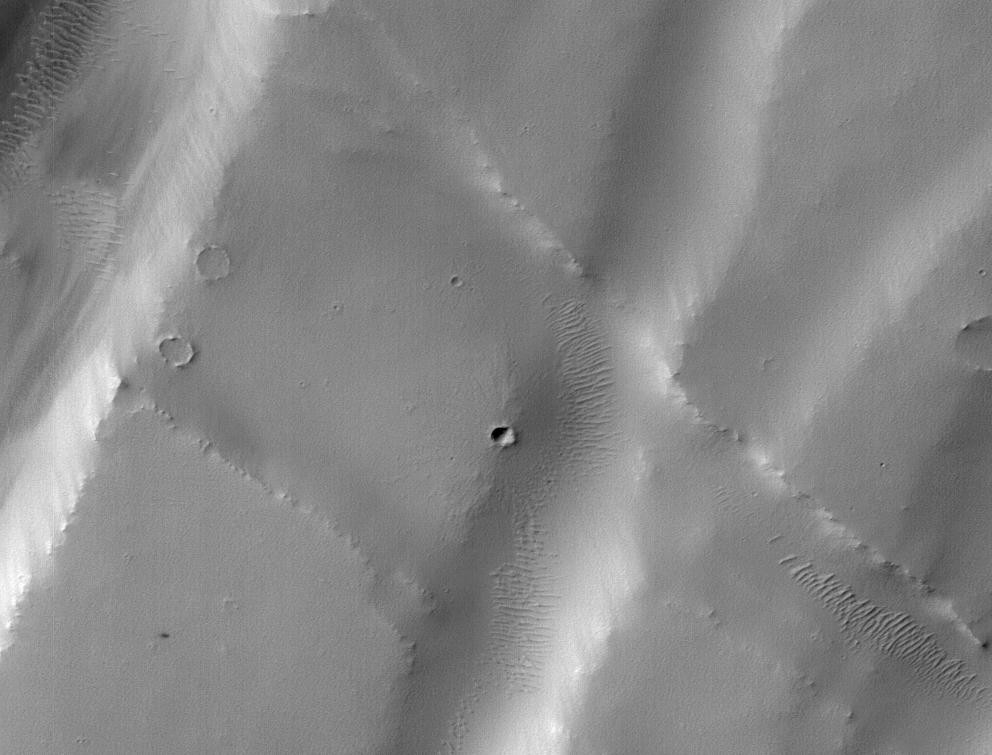Artificial intelligence helps classify new craters on Mars
The new tool has helped process over 112,000 images.

An innovative artificial intelligence (AI) tool developed by NASA has helped identify a cluster of craters on Mars that formed within the last decade.
The new machine-learning algorithm, an automated fresh impact crater classifier, was created by researchers at NASA’s Jet Propulsion Laboratory (JPL) in California — and represents the first time artificial intelligence has been used to identify previously unknown craters on the Red Planet, according to a statement from NASA.
Scientists have fed the algorithm more than 112,000 images taken by the Context Camera on NASA's Mars Reconnaissance Orbiter (MRO). The program is designed to scan the photos for changes to Martian surface features that are indicative of new craters. In the case of the algorithm's first batch of finds, scientists think these craters formed from a meteor impact between March 2010 and May 2012.
Related: Latest photos from NASA's Mars Reconnaissance Orbiter
"AI can't do the kind of skilled analysis a scientist can," Kiri Wagstaff, JPL computer scientist, said in the statement. "But tools like this new algorithm can be their assistants. This paves the way for an exciting symbiosis of human and AI 'investigators' working together to accelerate scientific discovery."
MRO's Context Camera takes low-resolution images covering hundreds of miles or kilometers at a time. While this instrument can help locate blast marks around an impact and narrow down where to look for a crater on the planet’s surface, scientists rely on the MRO’s High-Resolution Imaging Science Experiment (HiRISE) instrument to capture finer details and identify individual craters.
However, small surface features on Mars can be difficult to spot using orbiters alone. This process generally requires scientists to spend many hours each day studying images taken by spacecraft like MRO. Therefore, the crater classifier algorithm should save researchers time and identify even more craters on the Red Planet, according to the statement.
Get the Space.com Newsletter
Breaking space news, the latest updates on rocket launches, skywatching events and more!
"It wouldn't be possible to process over 112,000 images in a reasonable amount of time without distributing the work across many computers," Gary Doran, a computer scientist at JPL, said in the statement. "The strategy is to split the problem into smaller pieces that can be solved in parallel."

NASA researchers programmed the crater classifier using 6,830 images taken by the Context Camera. This process included photos of areas where humans had previously identified impacts, as well as areas with no craters, so the tool could learn to properly differentiate surface features on the Red Planet.
Researchers then put the crater classifier to the test by feeding the tool 112,000 images taken by the Context Camera. The AI tool identified a cluster of craters in a region on Mars called Noctis Fossae, which researchers confirmed using the HiRISE instrument. The tool detected 20 additional areas of interest that scientists will examine in more detail for craters.
NASA hopes to use similar classification technology on future Mars orbiters, which would help narrow down orbital imagery for scientists to investigate further and provide a more complete picture of how often meteors strike Mars.
"There are likely many more impacts that we haven't found yet," Ingrid Daubar, a scientist at JPL and Brown University, who helped develop the crater classifier, said in the statement. "This advance shows you just how much you can do with veteran missions like MRO using modern analysis techniques."
Follow Samantha Mathewson @Sam_Ashley13. Follow us on Twitter @Spacedotcom and on Facebook.
Join our Space Forums to keep talking space on the latest missions, night sky and more! And if you have a news tip, correction or comment, let us know at: community@space.com.

Samantha Mathewson joined Space.com as an intern in the summer of 2016. She received a B.A. in Journalism and Environmental Science at the University of New Haven, in Connecticut. Previously, her work has been published in Nature World News. When not writing or reading about science, Samantha enjoys traveling to new places and taking photos! You can follow her on Twitter @Sam_Ashley13.









